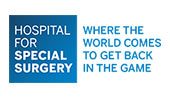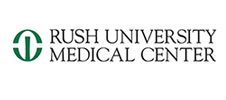Shoulder Arthroplasty
Return to Golf After Shoulder Arthroplasty: A Systematic Review
Background: The number of golfers aged ≥65 years has increased in recent years, and shoulder arthritis is prevalent in this age group. Guidelines for return to golf (RTG) after shoulder arthroplasty have not been fully established.
Reverse total shoulder arthroplasty provides better shoulder function than hemiarthroplasty for displaced 3- and 4-part proximal humeral fractures in patients over 70 years of age: a multicenter randomized controlled trial
Background: The most appropriate treatment for displaced multifragment proximal humeral fractures in elderly patients is currently unclear. Reverse total shoulder arthroplasty (rTSA) is a promising treatment option that is being used increasingly. The purpose of this study was to compare the outcome of rTSA with hemiarthroplasty (HA) for the treatment of displaced 3- and 4-part fractures in elderly patients.
Survival of Stemless Humeral Head Replacement in Anatomic Shoulder Arthroplasty. A prospective Study
Background: Long-term results of shoulder arthroplasty using stemless humeral head components with a mean follow-up of more than 10 years were not available until now. The aim of the study was the evaluation of long-term results of shoulder arthroplasty using a stemless humeral head component.
Return to Sport following Reverse Shoulder Arthroplasty: A Systematic Review
Background: The purpose of this study is to systematically review the evidence in the literature to ascertain the rate and timing of return to sport following reverse shoulder arthroplasty (RSA).
Outcomes and Survivorship After Arthroscopic Treatment of Glenohumeral Arthritis: A Systematic Review.
PURPOSE: To perform a systematic review of the literature describing outcomes, surgical procedures, and rates of conversion to arthroplasty after arthroscopic debridement of symptomatic primary glenohumeral osteoarthritis.
Primary reverse shoulder arthroplasty using contemporary implants is associated with very low reoperation rates.
Background: The early results of reverse shoulder arthroplasty (RSA) were influenced to some extent by the use of first-generation implants and surgeons' learning curves, resulting in relatively high reoperation rates. The purpose of this study was to quantify the burden of and identify the indications for reoperation after primary RSA using contemporary implants and techniques.
The effect of subscapularis repair on dislocation rates in reverse shoulder arthroplasty: a meta-analysis and systematic review.
Background: Reverse total shoulder arthroplasty is an effective treatment for patients with rotator cuff arthropathy; however, complication rates are relatively high (19%-50%), with implant instability and infection being particularly devastating to overall outcomes. The objective of this study was to analyze the highest level of data comparing dislocation rates and outcomes in reverse total shoulder arthroplasty with and without the subscapularis tendon repaired.
Outcomes of hyaluronic acid injections for glenohumeral osteoarthritis: a systematic review and meta-analysis.
Background: Hyaluronic acid (HA) is an analgesic and chondroprotective agent often used for the nonoperative treatment of osteoarthritis (OA). The effects of HA injections are well studied in the treatment of knee OA, but the effects in glenohumeral OA remain unclear. This study evaluated the efficacy of HA to reduce pain in patients with glenohumeral OA.
Three- and four-part displaced proximal humeral fractures in patients older than 70 years: reverse shoulder arthroplasty or nonsurgical treatment?
Background: The objective of our study was to evaluate the results of surgical treatment by reverse shoulder arthroplasty (RSA) compared with nonsurgical treatment after 2 years of follow-up in patients aged 70 years or older with displaced 3-part or 4-part proximal humeral fractures.
Sports Participation Is an Appropriate Expectation for Recreational Athletes Undergoing Shoulder Arthroplasty.
Background: Several studies have investigated sports participation in patients who undergo total shoulder arthroplasty (TSA). However, there are limited data in the setting of hemiarthroplasty (HA) and reverse total shoulder arthroplasty (rTSA), particularly regarding the frequency of participation in common sports.
Comparative analysis of work-related outcomes in hemiarthroplasty with concentric glenoid reaming and total shoulder arthroplasty.
Background: Anatomic total shoulder arthroplasty (aTSA) has demonstrated high levels of return to work, although there are fears of glenoid component loosening with higher work demand.
Instability after reverse total shoulder arthroplasty.
Background: This study evaluated patients with and without a prosthetic dislocation after reverse total shoulder arthroplasty (RTSA) to identify risk factors for instability.
Return to Recreational Sporting Activities Following Total Shoulder Arthroplasty.
Background: Patients are staying active longer and expect to return to sports or continue participating in recreational activities after total shoulder arthroplasty (TSA) for primary glenohumeral osteoarthritis.
Hemiarthroplasty Versus Total Shoulder Arthroplasty for Shoulder Osteoarthritis
Background: Return to activity is a commonly used indication for shoulder hemiarthroplasty (HA) compared with total shoulder arthroplasty (TSA). Despite clinical studies demonstrating better functional outcomes after TSA, the literature has failed to show a difference in return to sports.
Sports after shoulder arthroplasty: a comparative analysis of hemiarthroplasty and reverse total shoulder replacement
Background: Traditionally, fewer postoperative sport restrictions are imposed on hemiarthroplasty (HHA) patients on than reverse total shoulder arthroplasty (RTSA) patients. However, functional outcomes have been shown to be superior in RTSA.
Clinical and Radiographic Outcomes of the Ream-and-Run Procedure for Primary Glenohumeral Arthritis
Background: The ream-and-run procedure can provide improvement in shoulder function and comfort for selected patients with primary glenohumeral arthritis who wish to avoid a prosthetic glenoid component.
Return to Work After Anatomic Total Shoulder Arthroplasty for Patients 55 Years and Younger at Average 5-Year Follow-up
Abstract: As the number of anatomic total shoulder arthroplasties performed on younger patients continues to grow, return to work after surgery becomes increasingly important.
Sports- and Work-Related Outcomes After Shoulder Hemiarthroplasty
Background:With an active aging population, more patients expect to return to previous activities and work after surgery.
Patient Activity Levels After Reverse Total Shoulder Arthroplasty
Background: The indications for reverse total shoulder arthroplasty (RTSA) continue to expand, which has resulted in younger patients who want to remain active after RTSA.
Return to sports after shoulder arthroplasty
Abstract: Many patients prioritize the ability to return to sports following shoulder replacement surgeries, including total shoulder arthroplasty (TSA), reverse total shoulder art hroplasty (RTSA), and hemiarthroplasty (HA).

















